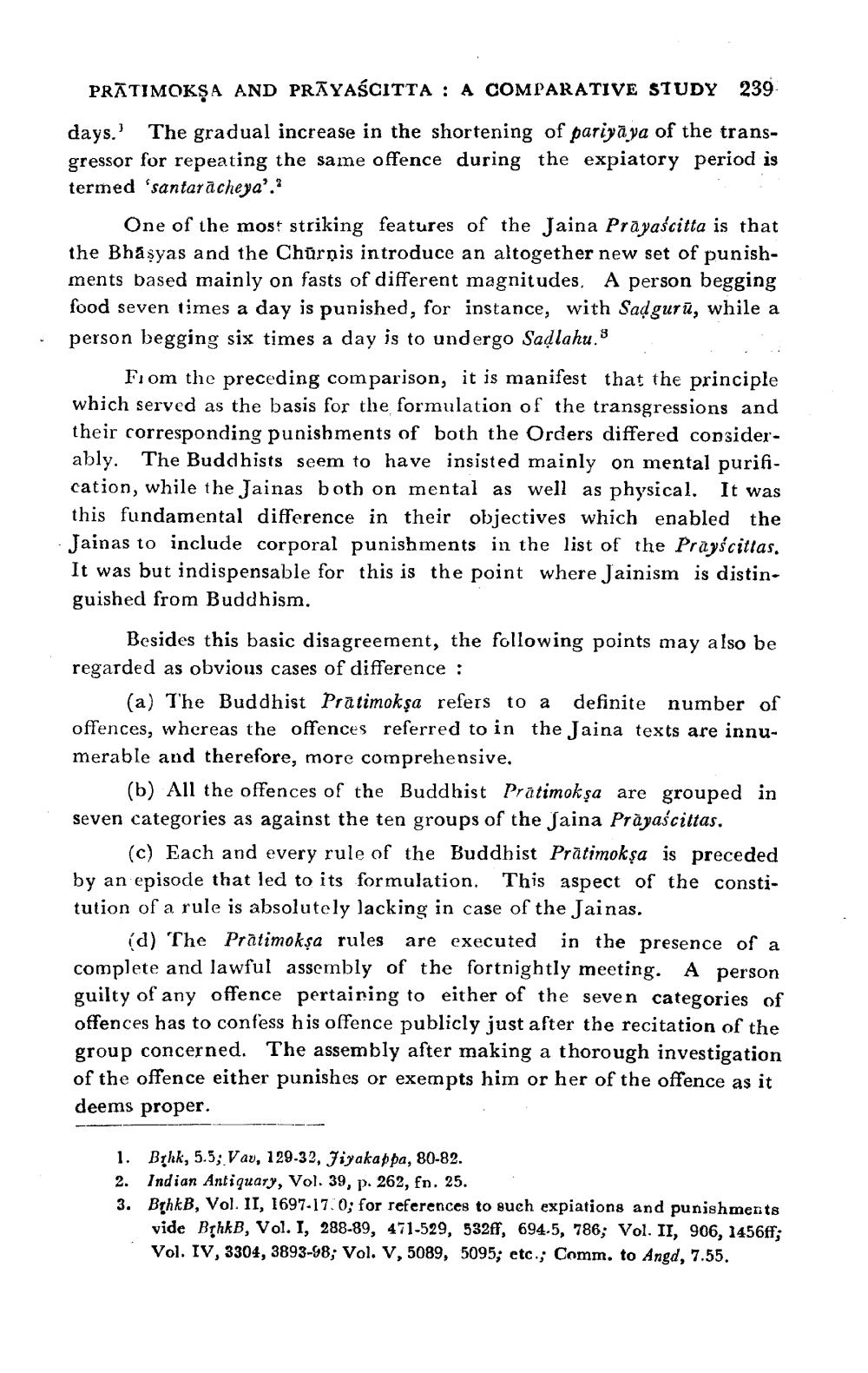________________
PRĀTIMOKŞA AND PRĀYAŚCITTA : A COMPARATIVE STUDY 239 days.' The gradual increase in the shortening of pariyāya of the transgressor for repeating the same offence during the expiatory period is termed 'santarācheya'.?
One of the most striking features of the Jaina Prayascitta is that the Bhasyas and the Churņis introduce an altogether new set of punishments based mainly on fasts of different magnitudes. A person begging food seven times a day is punished, for instance, with Sadgurū, while a person begging six times a day is to undergo Sadlahu.S
From the preceding comparison, it is manifest that the principle which served as the basis for the formulation of the transgressions and their corresponding punishments of both the Orders differed considerably. The Buddhists seem to have insisted mainly on mental purification, while the Jainas both on mental as well as physical. It was
this fundamental difference in their objectives which enabled the · Jainas to include corporal punishments in the list of the Prayscitlas. It was but indispensable for this is the point where Jainism is distinguished from Buddhism.
Besides this basic disagreement, the following points may also be regarded as obvious cases of difference :
(a) The Buddhist Pratimokșa refers to a definite number of ffences, whereas the offences referred to in the Jaina texts are innumerable and therefore, more comprehensive.
(b) All the offences of the Buddhist Prātimokşa are grouped in seven categories as against the ten groups of the Jaina Prāyaścittas.
(c) Each and every rule of the Buddhist Prātimoksa is preceded by an episode that led to its formulation. This aspect of the constitution of a rule is absolutely lacking in case of the Jainas.
(d) The Prātimokṣa rules are executed in the presence of a complete and lawful assembly of the fortnightly meeting. A person guilty of any offence pertaining to either of the seven categories of offences has to confess his offence publicly just after the recitation of the group concerned. The assembly after making a thorough investigation of the offence either punishes or exempts him or her of the offence as it deems proper.
1. Brhk, 5.5; Vav, 129-32, Jiyakappa, 80-82. 2. Indian Antiquary, Vol. 39, p. 262, fn. 25. 3. BrhkB, Vol. II, 1697-17.0; for references to such expiations and punishments
vide BỊhkB, Vol. I, 288-89, 471-529, 532ff, 694.5, 786; Vol. II, 906, 1456ff; Vol. IV, 3304, 3893-98; Vol. V, 5089, 5095; etc.; Comm. to Angd, 7.55.




